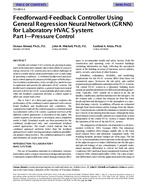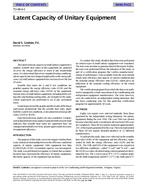-
-
Available Formats
- Options
- Availability
- Priced From ( in USD )
-
Available Formats
-
- Immediate download
- $16.00
- Add to Cart
Customers Who Bought This Also Bought
-

TO-98-05-1 -- Feedforward-Feedback Controller Using Gener...
Priced From $16.00 -

TO-98-09-2 -- Latent Capacity of Unitary Equipment
Priced From $16.00 -

TO-98-11-1 -- Development and Validation of a Room Air-Co...
Priced From $16.00 -

TO-98-12-5 -- The Effects of Varying Indoor Air Temperatu...
Priced From $16.00
About This Item
Full Description
Climate change has the potential to be the most serious problem that our civilization faces, and the greenhouse gases responsible for the danger are due to human activities. District energy is a concept that results from combining district heating and cooling with the generation of electricity. District energy can play an important role in the climate-change strategies under consideration by policy makers by offering a technology to significantly reduce CO2 emissions. The well-documented economic and environmental benefits of a district energy system utilizing various combinations of simultaneous generation of heat, chilled water, and electricity are discussed briefly in this paper. An overview of the technological innovations, applications, and future trends in district energy systems with cogeneration is provided, particularly as they relate to the renovation and replacement of existing systems. At the present time, district energy is underutilized and serves only 1.3% of the U.S. energy needs. This paper presents a simple model for implementing increased utilization of district energy in the U.S. based on the experience in comparable European Union (EU) countries. Attainment of the Kyoto Climate Change Protocol, the 7% reduction of CO2 emissions from 1990 levels by the year 2012, is discussed in the context of the potential contribution of increased utilization of district energy. By reaching par with comparable EU countries, the U.S. could achieve a 3% reduction in total national CO2 emissions. With 100% implementation of district energy serving the heating market sector, the U.S. could achieve an 8.5% reduction in CO2 emissions. Further significant reduction in CO2 is possible with district energy concepts by redirecting national policy on the use of internal combustion engines through integration of the transportation energy sector with industrial, building, and power plant sectors; a major electrification of our transportation infrastructure would likely result. Increased implemen tation of district energy thereby addresses the risks posed by current global climate change theories and is a necessary condition for the U.S. to achieve CO2 emission reductions.
Units: Dual





